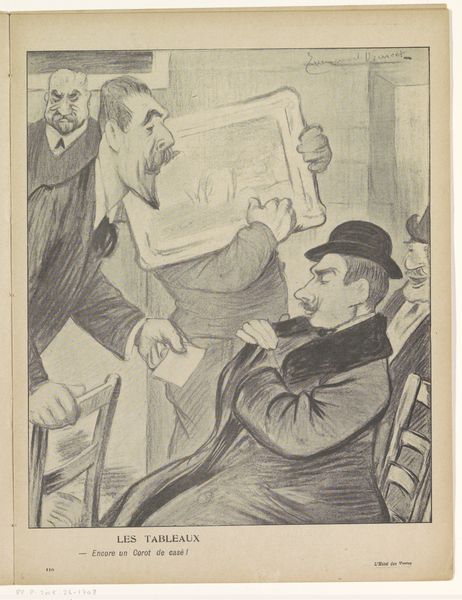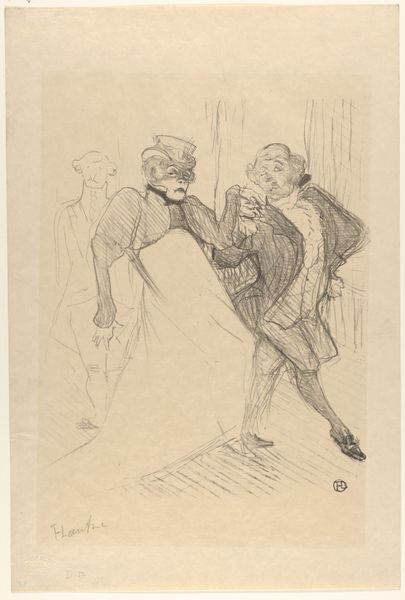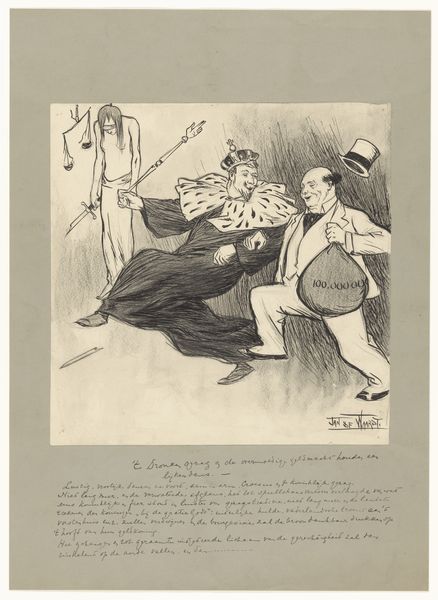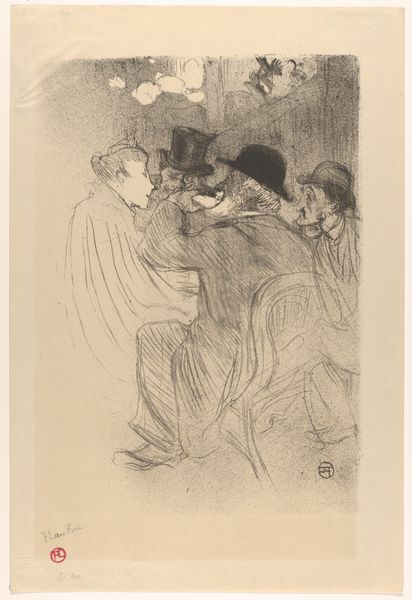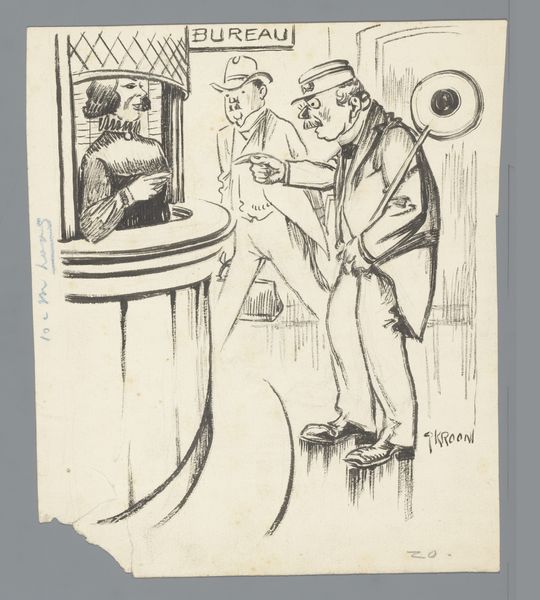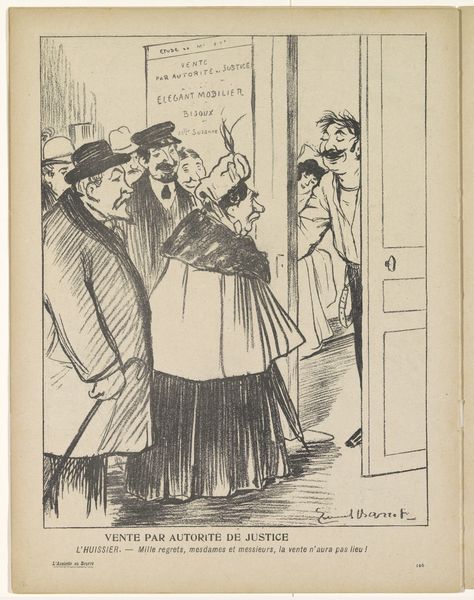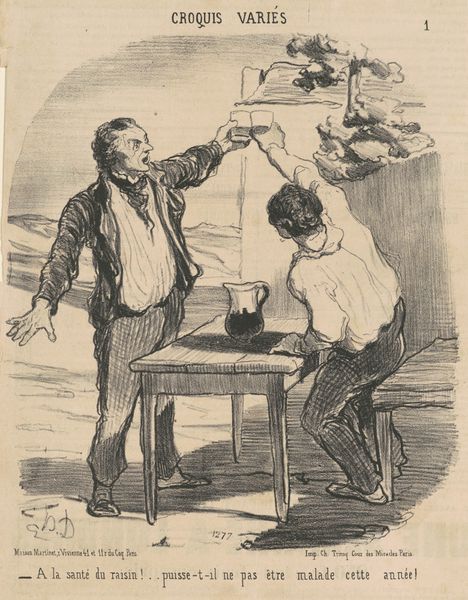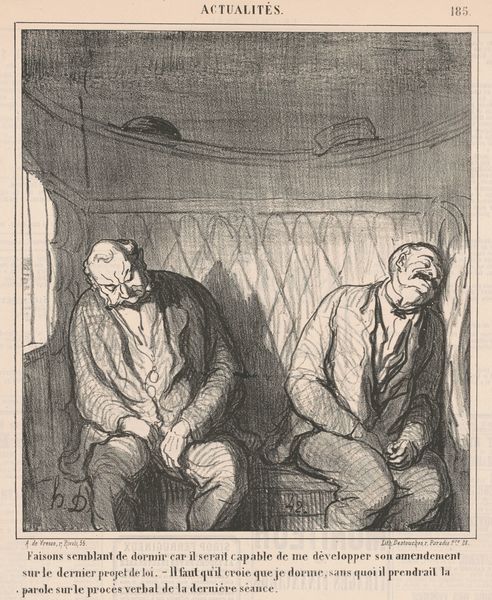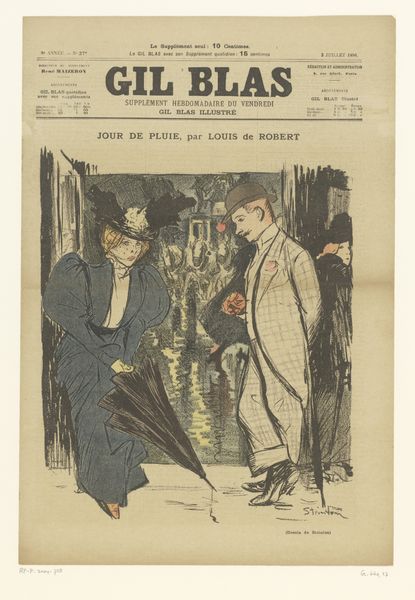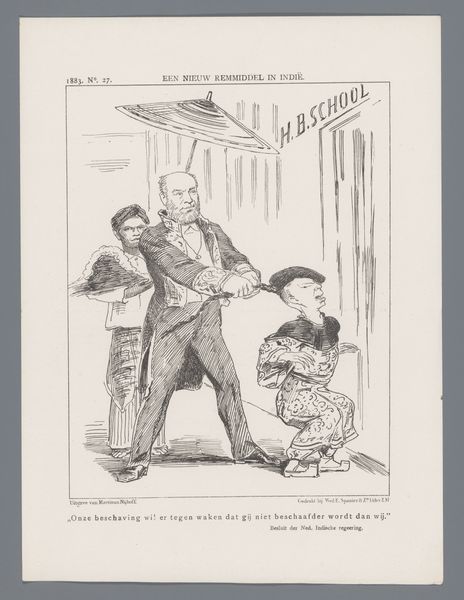
drawing, ink, pen
#
drawing
#
narrative-art
#
caricature
#
caricature
#
ink
#
pen
#
genre-painting
Dimensions: height 409 mm, width 322 mm
Copyright: Rijks Museum: Open Domain
Curator: The Jan de Waardt drawing from 1898, "Owner of factory next to dead woman of a worker", executed in pen and ink, certainly catches the eye. What stands out to you initially? Editor: Well, the raw lines create an immediate sense of harsh reality. There's a clear depiction of power imbalance here, with what appears to be a factory owner confronting a worker, while someone is laying sick, or perhaps deceased, in bed in the background. I'm curious, what is the most compelling thing about it from your perspective? Curator: As a materialist, I see this drawing as a potent representation of labor conditions at the end of the 19th century. The medium itself—ink on paper—becomes crucial. It’s a readily available, relatively inexpensive material, suggesting the artist aimed for accessibility and perhaps a wider circulation of his message, bypassing traditional art world structures. What do you make of that compositional decision? Editor: I see what you mean. It wasn't about creating a precious object. It seems more focused on documenting a moment and perhaps provoking a reaction, as fast and as broad as possible. So, what sort of a reaction would have been typical in its original cultural context, toward pieces of this type, dealing with poverty, or harsh socio-economic disparities? Curator: Considering the socio-economic backdrop, it would definitely ruffle some feathers and question prevailing artistic tastes that often favored more "noble" subjects. Caricature highlights class differences and their impact on people’s material circumstances, thus serving to disrupt complacency through critique. How effective do you feel it would be to our contemporary viewers? Editor: I think it’s incredibly relevant. It reminds us of how crucial it is to stay critical of power structures and reflect on material conditions, even today. It definitely made me rethink how art materials contribute to the message. Curator: Precisely. By understanding the "how" and "why" of artistic production, we gain a deeper understanding of the social forces at play. It’s more than just an image; it’s a document of labor and a call to action.
Comments
No comments
Be the first to comment and join the conversation on the ultimate creative platform.
